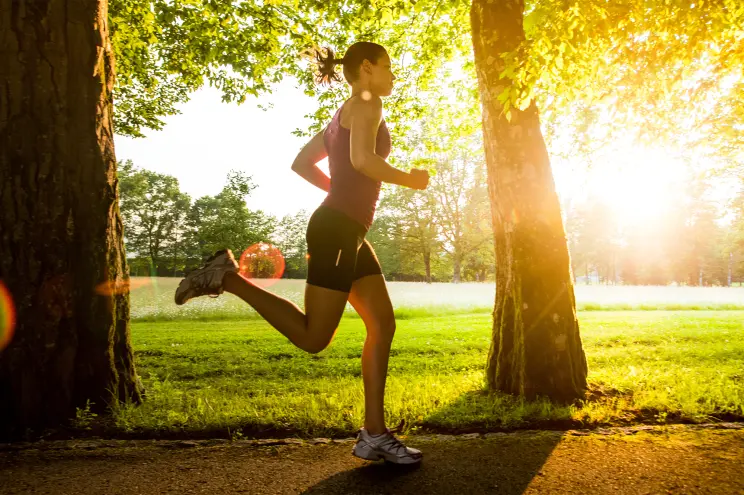When Was Running Invented? The Origins and Evolution of a Timeless Activity
Running is a universal activity that transcends cultures, continents, and eras. But have you ever wondered, When was running invented?” This question takes us on a fascinating journey through time, exploring the origins of running, its evolution, and its significance in human history. In this article, we will delve into the history of running, uncovering its ancient roots and its impact on human civilization.
The Origins of Running
Prehistoric Beginnings
Running, in its most basic form, has likely been around as long as humans have existed. Our early ancestors, the Homo sapiens, relied on running for survival. Hunting and gathering required the ability to chase down prey and evade predators. This form of running, known as “persistence hunting,” involved tracking animals over long distances until the prey was exhausted.
Fossil evidence and studies of indigenous cultures, such as the San people of Southern Africa, suggest that running was an integral part of early human life. The biomechanics of running are deeply ingrained in our physiology, with our legs, feet, and muscles adapted for this activity.
Ancient Civilizations and Running
As human societies evolved, running took on new roles beyond survival. Ancient civilizations, such as the Greeks, Romans, and Egyptians, incorporated running into their culture and rituals.
- Ancient Greece: Perhaps the most famous early runners were the Greeks. Running was a central part of the ancient Olympic Games, which began in 776 BC. The stadium race, a sprint of about 192 meters, was one of the original Olympic events. The Greeks also had long-distance runners known as hemerodromoi, who were messengers covering vast distances on foot.
- Ancient Rome: The Romans adopted running from the Greeks and incorporated it into their military training. Roman soldiers were required to run long distances to build endurance and stamina. Running also played a role in Roman sports and entertainment.
- Ancient Egypt: In Egypt, running was linked to religious and ceremonial practices. Pharaohs participated in ritual runs as part of their coronation ceremonies, symbolizing their physical and spiritual fitness to rule.
Running in the Middle Ages
Running continued to be an essential activity during the Middle Ages, although it was less formalized than in ancient times. Running was primarily associated with military training, hunting, and communication. Messengers, known as “runners,” were employed to carry messages between cities and towns, as written communication was limited.
One notable example is the Japanese “ekiden,” a long-distance relay race that originated in the early 17th century. This tradition of relay running has continued to modern times and is celebrated in events such as the Hakone Ekiden, one of Japan’s most famous races.
The Renaissance of Running
The Renaissance period saw a renewed interest in physical fitness and sports, including running. In the 16th and 17th centuries, running began to be seen as a competitive sport rather than just a practical activity.
- England: In England, foot races became popular among the nobility and commoners alike. Professional runners, known as “pedestrians,” competed in races for money and fame. One famous pedestrian, Captain Robert Barclay Allardice, completed a feat known as the “1000 miles in 1000 hours” challenge in 1809, running one mile every hour for 1000 consecutive hours.
- Scotland: Highland games in Scotland also featured running events, with races such as the hill race, where competitors ran up and down steep hills.
The Birth of Modern Running
The 19th and 20th centuries marked the true beginning of modern running as we know it today. Several key developments during this period shaped the sport and laid the foundation for its global popularity.
The Revival of the Olympic Games
The modern Olympic Games, revived in 1896 by Pierre de Coubertin, played a crucial role in popularizing running. The first modern Olympics featured several running events, including the marathon, inspired by the legendary run of Pheidippides from Marathon to Athens in 490 BC.
The Rise of Marathon Running
The marathon quickly became one of the most iconic running events. The 1908 London Olympics saw the establishment of the official marathon distance of 26.2 miles (42.195 kilometers), based on the distance from Windsor Castle to the Olympic Stadium. This distance has since become the standard for marathons worldwide.
The Growth of Track and Field
Track and field events, including various running distances, gained prominence in the early 20th century. The establishment of international governing bodies, such as the International Association of Athletics Federations (IAAF) in 1912, standardized the sport’s rules and regulations.
The Running Boom
The late 20th century witnessed a running boom driven by a growing interest in fitness and health. Several factors contributed to the surge in popularity of running:
- Jogging Movement: In the 1960s and 1970s, the jogging movement, popularized by figures like Bill Bowerman and Jim Fixx, encouraged people of all ages and fitness levels to take up running for health and recreation.
- Marathon Craze: Marathons became increasingly popular, with iconic races like the Boston Marathon and the New York City Marathon attracting thousands of participants. The rise of mass participation in marathons inspired many to take up long-distance running.
- Scientific Advancements: Advances in sports science and technology improved training methods, footwear, and nutrition, making running more accessible and enjoyable for people of all backgrounds.
Running in the Modern Era
Today, running is one of the most popular forms of exercise worldwide. It has evolved into a diverse and inclusive activity, with events ranging from 5K fun runs to ultramarathons. Running clubs, virtual races, and social media communities have further connected runners across the globe.
Health Benefits of Running
Running offers numerous health benefits, including improved cardiovascular health, weight management, and mental well-being. Research has shown that regular running can reduce the risk of chronic diseases, enhance mood, and increase longevity.
Running as a Cultural Phenomenon
Running has also become a cultural phenomenon, with iconic events like the Boston Marathon symbolizing resilience and community spirit. The rise of social media has allowed runners to share their experiences, inspire others, and celebrate achievements.
Conclusion
So, when was running invented? While it’s impossible to pinpoint an exact date, running has been an integral part of human life for millennia. From the prehistoric hunter-gatherers to the modern-day marathoners, running has evolved and adapted, reflecting the changing needs and aspirations of humanity.
As we lace up our running shoes and hit the pavement, we are continuing a tradition that stretches back to the dawn of civilization. Running is not just a sport or a form of exercise; it’s a timeless activity that connects us to our past, present, and future. Whether you’re a seasoned athlete or a casual jogger, running offers a journey of discovery, challenge, and joy that transcends time and place.


